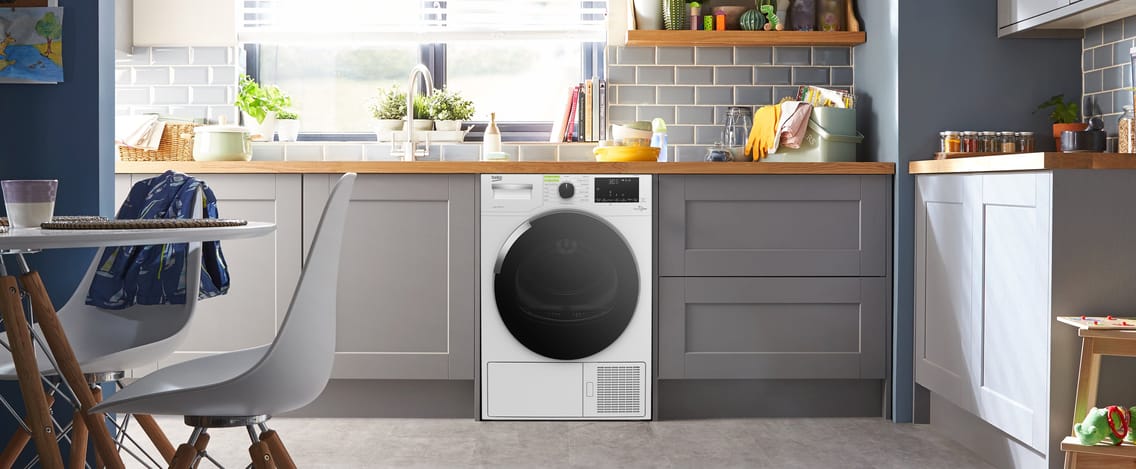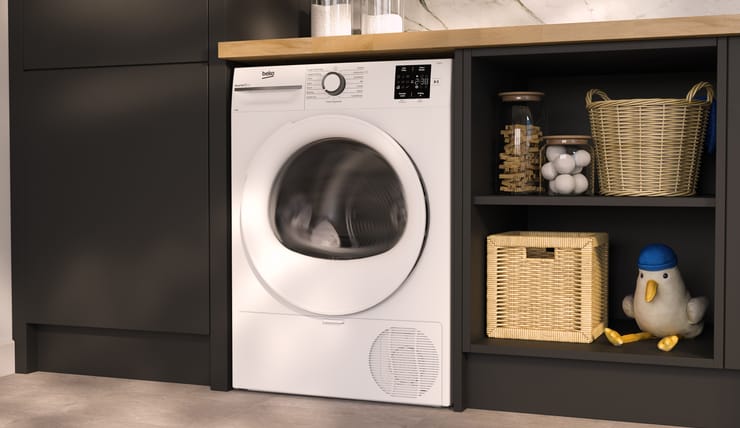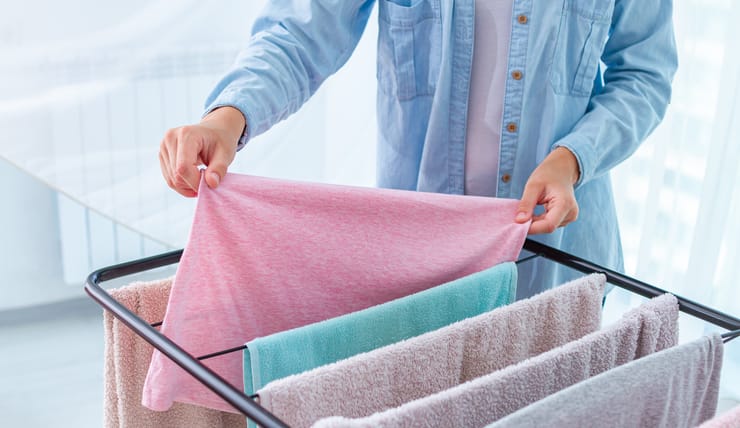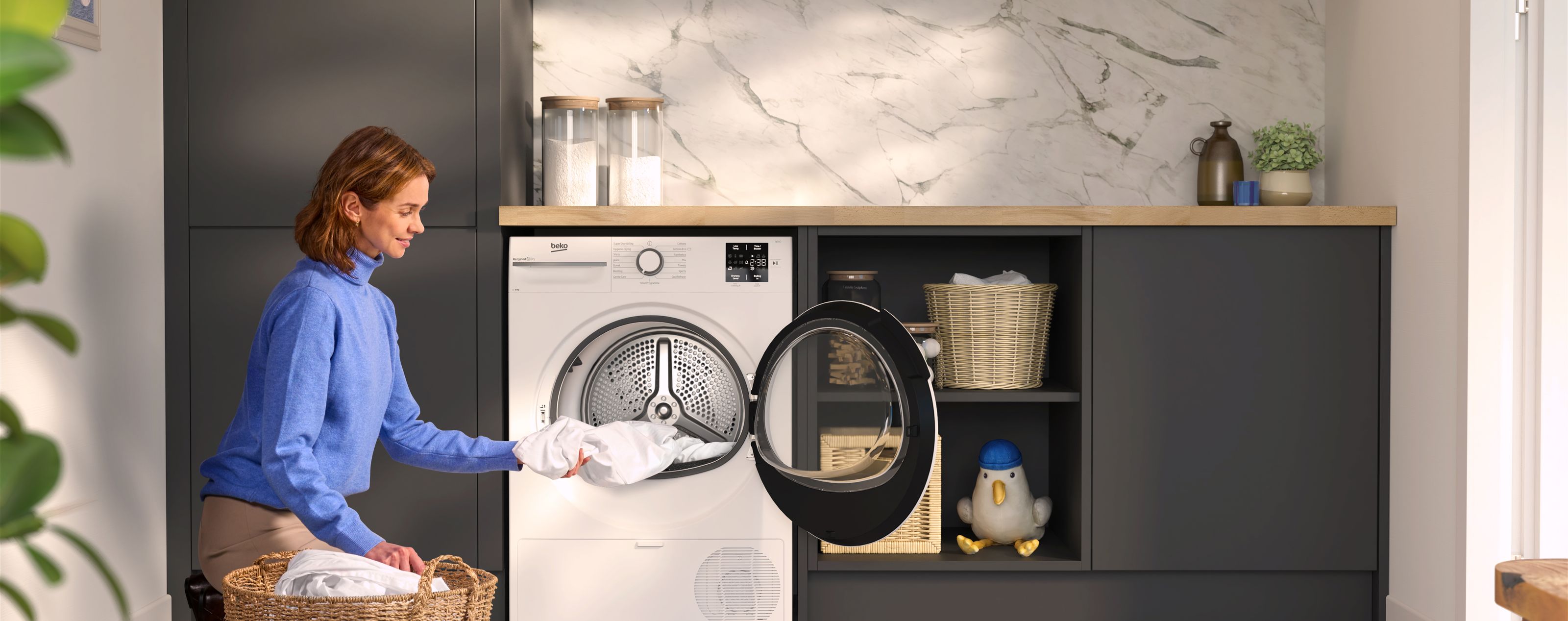Tumble Dryer vs. Heated Clothes Rail: Why a Tumble Dryer is the Smart Choice
When it comes to drying clothes, UK homeowners are often torn between a tumble dryer and the more modern heated clothes rail. While heated clothes rails have gained popularity for their perceived energy savings, tumble dryers continue to offer undeniable convenience, efficiency, and versatility.
In this article, we’ll dive into the pros and cons of both options to help you make the best choice for your home. Whether you’re after cost-effectiveness, quick drying times, or ease of use, tumble dryers tend to come out on top as the smartest choice.

The Real Cost of Running a Tumble Dryer vs. a Heated Clothes Rail
One of the most common concerns people have about tumble dryers is the cost of running them. Historically, tumble dryers have had a reputation for being expensive to operate. However, thanks to advancements in energy-efficient technologies, modern models are far more economical than many assume. For instance, a standard 9kg heat pump tumble dryer consumes about 2.16 kWh per cycle. If you use your dryer two times per week, your average annual usage will be 259.2 kWh, costing you around £0.53 per cycle and £63.50 a year.
In contrast, heated clothes rails are generally marketed as a cheaper alternative, with running costs typically around 5p to 10p per hour. However, there’s a catch: heated clothes rails take significantly longer to dry clothes, often 4-6 hours or more for a full load. When you factor in these longer drying times, the cost of using them amounts to £0.20 to £0.80. The savings might not be as significant as they first appear, especially when dealing with multiple loads. Additionally, heated clothes rails may require extra heating in the room to be effective, further increasing energy consumption.
Ultimately, while the initial outlay and running costs of a tumble dryer may seem higher, they offer time savings, especially when dealing with large households or multiple loads.
Why Tumble Dryers Outperform Heated Clothes Rails
When comparing tumble dryers and heated clothes rails, it’s essential to consider the performance of each method. Tumble dryers, especially heat pump tumble dryers, are designed to handle larger loads and dry clothes quickly, making them far more convenient for busy households. A standard condenser dryer might take 60-90 minutes to dry a full load, or a heat pump dryer could take 90-120 minutes or more, , regardless of the weather or season, offering unparalleled convenience during the UK's damp winters. Not only that but some of Beko’s heat pump dryers come with the RapiDry™ technology, which shortens the length of the drying cycle while maintaining the overall energy efficiency, saving you money and the environment.
Heated clothes rails, on the other hand, are better suited for smaller loads or lighter items such as shirts and underwear. However, they take much longer to dry clothes and can leave garments feeling slightly damp, especially in humid environments. Another downside of heated rails is their potential to cause increased humidity in a room, which could lead to mould or condensation issues, particularly in smaller spaces.
Tumble Dryer vs Heated Airer Cost: What You Need to Know
Let’s break down the costs associated with both options:
 Tumble dryers: Upfront costs for a tumble dryer can range from £200 to £800, depending on the model and features. Energy consumption varies based on the type of dryer (heat pump, vented, or condenser), but with newer models, energy-efficient cycles can significantly reduce electricity usage, costing you around £0.53 per cycle and £63.50 a year. The average lifespan of a tumble dryer is around 10-15 years, making it a long-term investment.
Tumble dryers: Upfront costs for a tumble dryer can range from £200 to £800, depending on the model and features. Energy consumption varies based on the type of dryer (heat pump, vented, or condenser), but with newer models, energy-efficient cycles can significantly reduce electricity usage, costing you around £0.53 per cycle and £63.50 a year. The average lifespan of a tumble dryer is around 10-15 years, making it a long-term investment.
 Heated clothes rails: Heated clothes rails are cheaper upfront, costing between £30 and £100. However, they typically have shorter lifespans and often require additional heat from other sources to be truly effective. While running costs seem lower, the longer drying times can add up over time.
Heated clothes rails: Heated clothes rails are cheaper upfront, costing between £30 and £100. However, they typically have shorter lifespans and often require additional heat from other sources to be truly effective. While running costs seem lower, the longer drying times can add up over time.
Innovative Tumble Dryer Features That Save You Money

The latest tumble dryers come equipped with features designed to improve energy efficiency and reduce running costs. Some of the top technologies to look out for include:
- Heat pump technology: Unlike traditional dryers, heat pump models reuse warm air during the drying cycle, reducing energy consumption by up to 50%.
- Sensor drying: Many dryers now come with sensors that detect moisture levels in your clothes, automatically stopping the cycle when clothes are dry. This feature prevents over-drying and cuts down on energy use.
- Eco-friendly settings: Many modern dryers offer eco-mode or energy-saving cycles that use lower heat settings and longer drying times to save energy while still getting the job done.
- RapidDry™ technology: RapidDry™ offers faster drying times on your heat pump tumble dryer. It’s perfect for those who need clothes dried quickly, cutting the drying time while still being gentle on fabrics.
These innovations can make a significant difference in reducing the long-term costs of tumble dryer ownership, helping you save money without sacrificing convenience.
For further tips on how to save time and energy when drying clothes with Beko, check out our guide on using your appliances more effectively.
Pros and Cons of Heated Clothes Rails
While tumble dryers offer many advantages, heated clothes rails have their own set of pros and cons. Here’s a quick breakdown:
Pros:
- Lower upfront and operational costs
- Gentler on delicate fabrics
- Compact, making them ideal for small spaces
Cons:
- Longer drying times, especially in cold or humid conditions
- Limited capacity, requiring more drying sessions for larger loads
- Can increase humidity indoors, leading to potential condensation issues
While heated clothes rails might suit single households or those with minimal laundry needs, their limitations become more evident when dealing with heavier fabrics or larger quantities of clothes.
Best Tumble Dryer Alternatives in the UK
Though tumble dryers are the most efficient option for many, there are alternatives for those who prefer other methods.
For instance, air drying indoors can save energy, but it’s slower and can lead to dampness in your home. It also depends heavily on weather conditions if you’re drying clothes outside. Dehumidifier can help speed up air drying indoors by removing moisture from the air, though this method requires time and space, and is less effective for quick drying.
As mentioned, heated rails are gentle and inexpensive to run but fall short in terms of capacity and speed.
While these alternatives have their place, they often come with trade-offs, making tumble dryers the most reliable and efficient option.
Why Investing in a Tumble Dryer Pays Off
Investing in a high-quality tumble dryer may seem like a larger initial expense, but it can offer significant returns over time. The ability to dry clothes quickly, handle larger loads, and do so regardless of the weather makes tumble dryers a smart choice for busy households.
In the long run, the savings in time, convenience, and energy efficiency—especially with modern models—make tumble dryers an excellent investment for UK homeowners.



